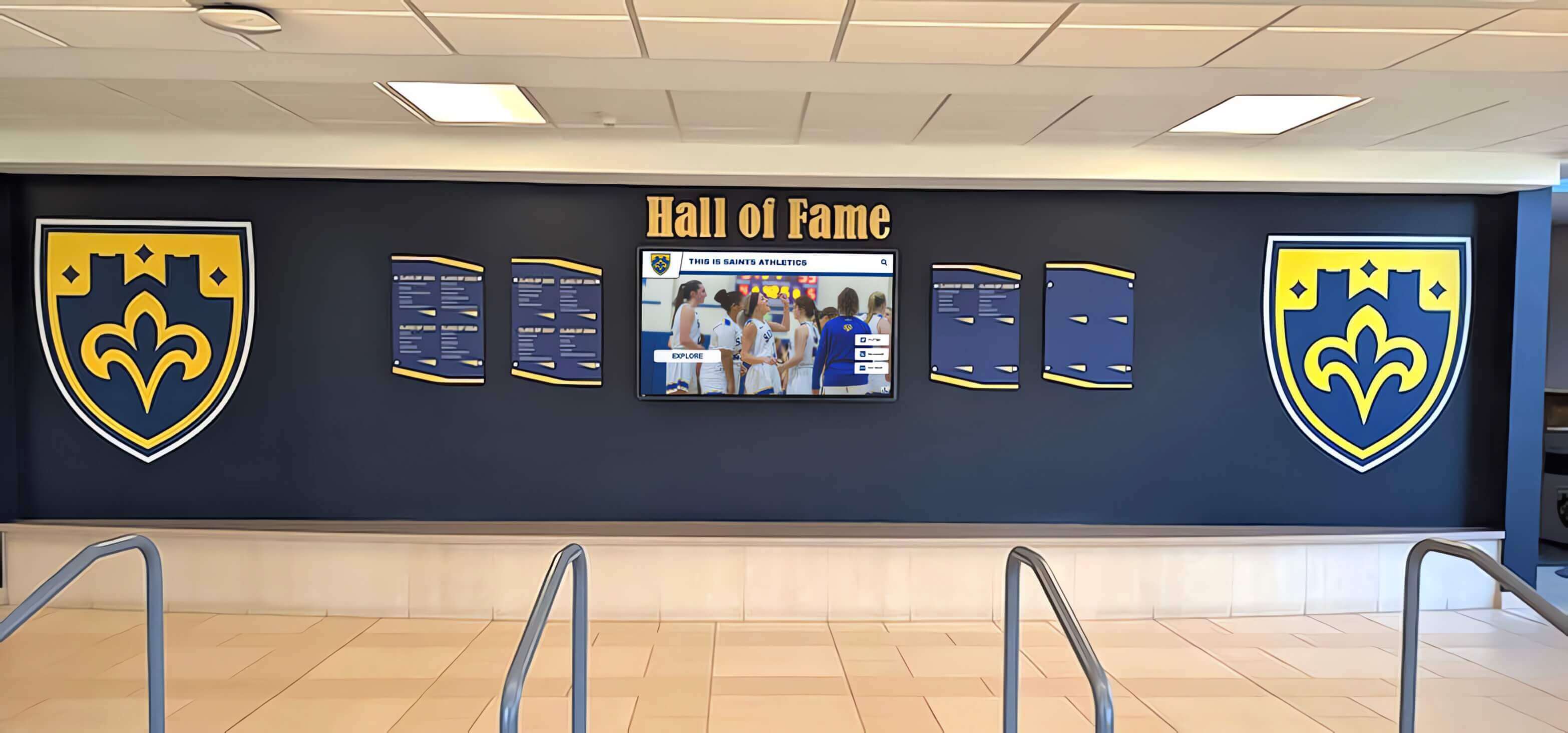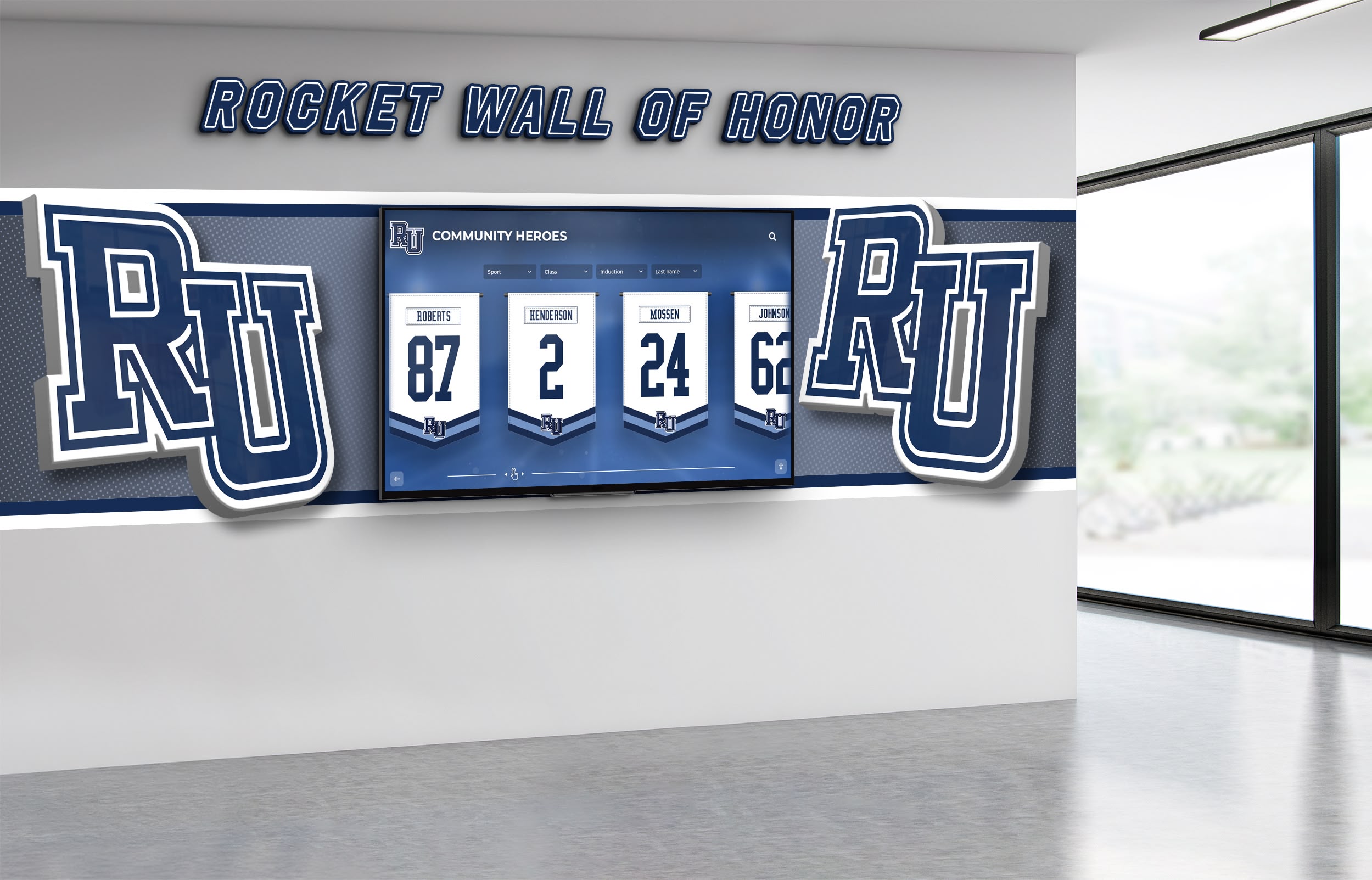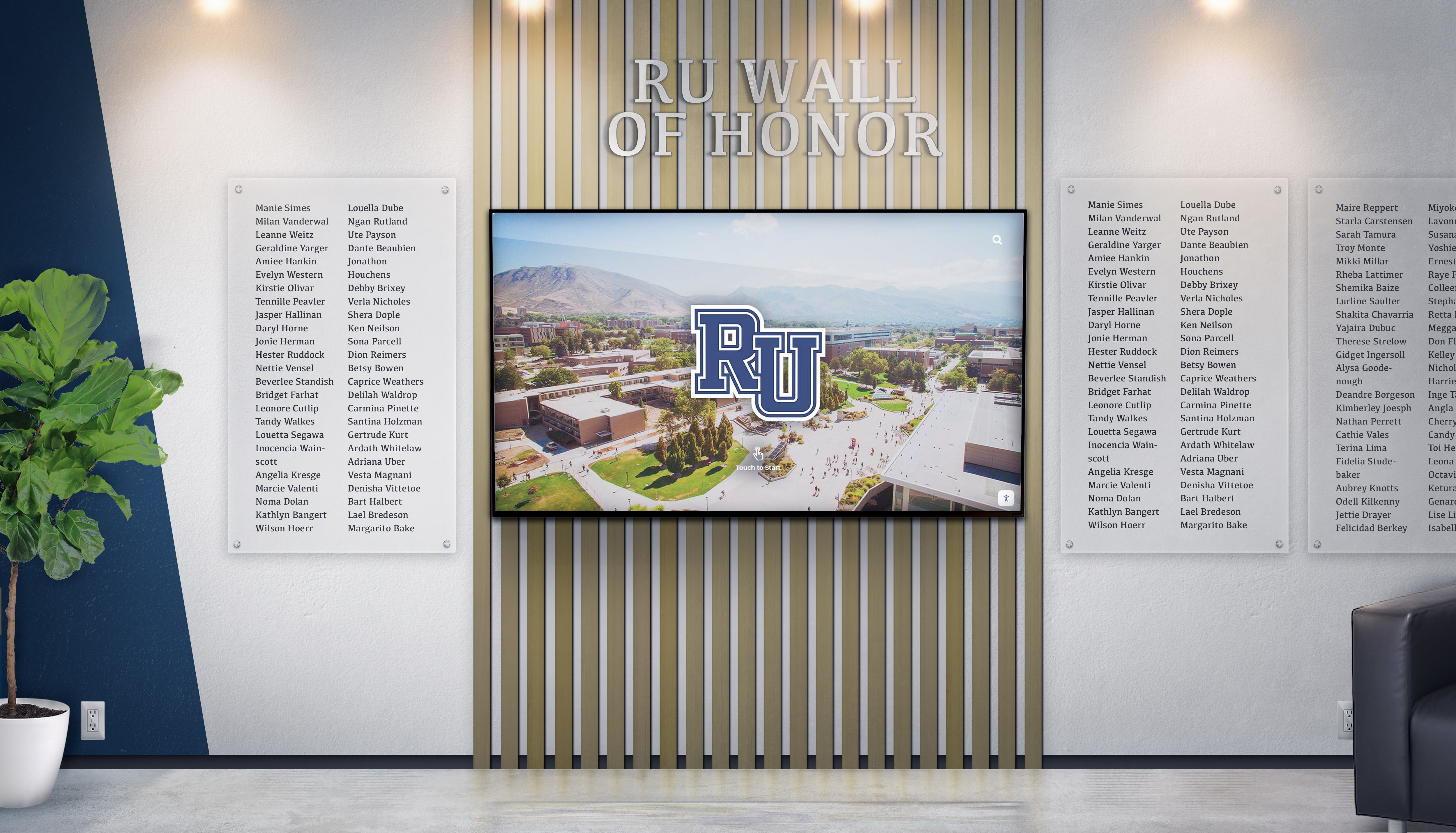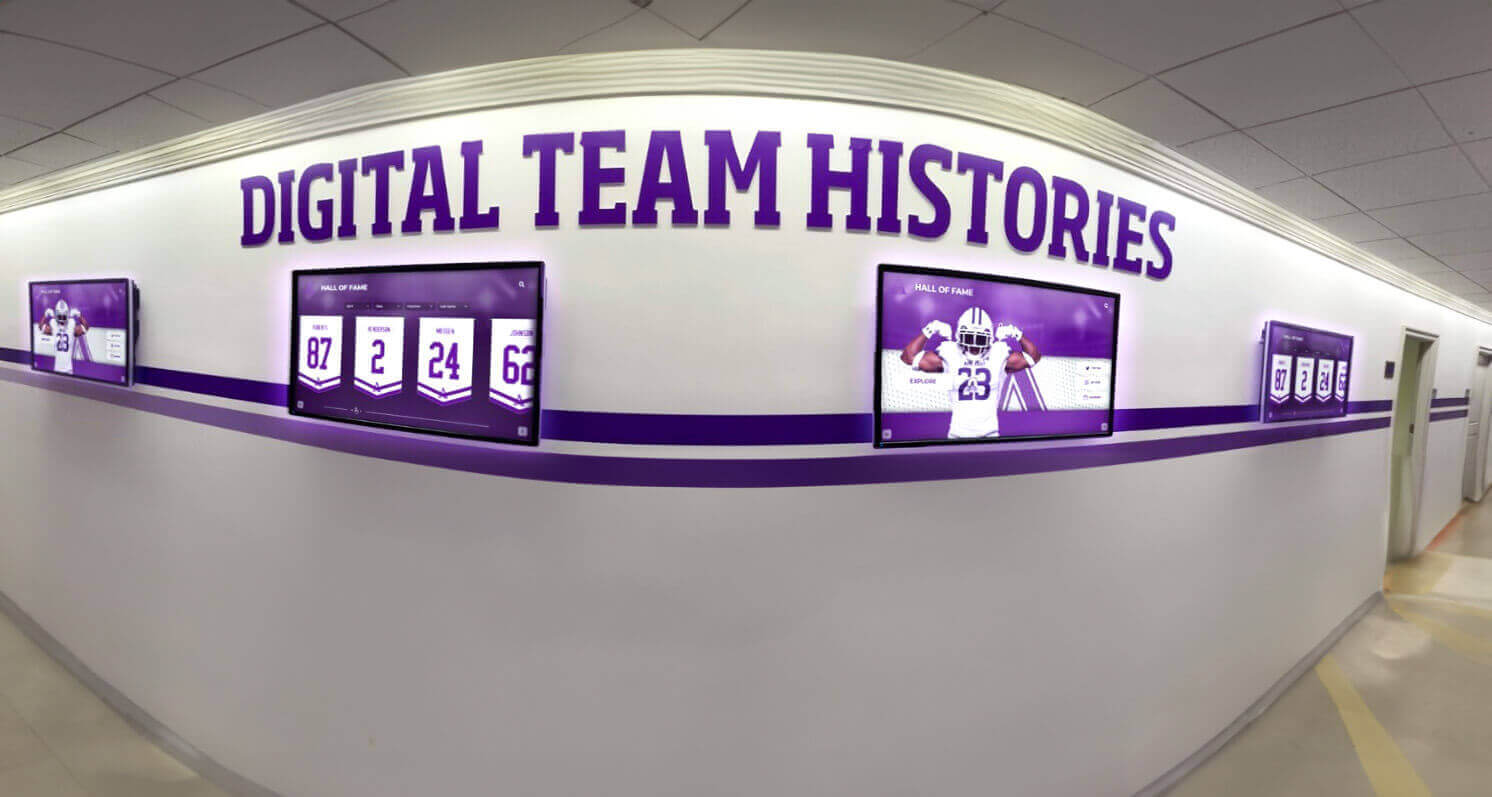The NCAA Basketball Tournament—affectionately known as March Madness—represents the pinnacle of college basketball competition. Every March and early April, 68 mens teams and 68 womens teams compete in single-elimination tournaments that create instant legends, unforgettable moments, and performances that define entire careers. For universities across the country, March Madness success forms a cornerstone of athletic identity and institutional pride that deserves lasting recognition.
Celebrating March Madness Excellence Through Recognition
March Madness performances—from Cinderella tournament runs to individual scoring explosions, from championship victories to bracket-busting upsets—create defining moments in college basketball history. These achievements deserve recognition that matches their significance, inspiring current student-athletes while honoring the legends who elevated their programs on the sport's biggest stage. Modern digital recognition solutions enable universities to celebrate tournament excellence comprehensively, preserving March Madness memories for generations of students, alumni, and basketball fans.
The March Madness Phenomenon in College Basketball
The NCAA Men’s Basketball Tournament began in 1939 with just eight teams. Today’s 68-team field creates a three-week spectacle that captures national attention like few other sporting events. The tournament’s single-elimination format means one loss ends championship dreams, creating dramatic tension where underdogs routinely shock favorites and individual performances can define careers in 40 minutes of competition.

The women’s tournament, established in 1982, has grown into an equally compelling event showcasing extraordinary talent and competitive basketball. Stars like Diana Taurasi, Breanna Stewart, Maya Moore, and Sabrina Ionescu have created March Madness moments that stand alongside any performances in basketball history, while programs like UConn, Tennessee, Stanford, and Notre Dame have built dynasties around sustained tournament excellence.
Why March Madness Achievements Matter
Tournament success carries unique significance that transcends regular season accomplishments:
National Stage Visibility: March Madness receives enormous media coverage and national viewership, meaning outstanding tournament performances gain recognition far beyond typical college basketball games. A breakout performance in March can elevate a player’s profile instantly and create lasting national recognition for university programs.
Pressure and Stakes: The single-elimination format creates pressure unlike any regular season game. Players who excel when championship dreams hang on every possession demonstrate exceptional mental toughness, competitive character, and ability to perform under maximum stress. These qualities make March Madness performances particularly worthy of recognition and celebration.
Program-Defining Moments: Championship runs, Final Four appearances, and upset victories become integral parts of university athletic identity. Current students, prospective recruits, and alumni reference these moments as defining chapters in program history, creating connections across generations of basketball tradition.
Career-Making Performances: For many college basketball players, March Madness represents their final opportunity to compete at high levels. Outstanding tournament performances provide fitting conclusions to college careers while creating memories that athletes carry throughout their lives. Proper recognition honors these achievements and ensures they remain part of institutional memory.
Resources on college athletics hall of fame programs demonstrate how universities can create comprehensive recognition systems that properly celebrate March Madness excellence alongside other athletic achievements.
Men’s March Madness: Legendary Performances and Programs
The men’s tournament has produced countless unforgettable performances across eight decades of competition.
Individual Scoring Explosions
Bill Bradley’s 1965 Tournament: Princeton’s Bill Bradley scored 177 points across five tournament games in 1965, leading Princeton to a third-place finish. His 58-point performance against Wichita State in the consolation game remains a tournament record for a single game. Bradley’s tournament excellence demonstrated that elite performance could come from programs outside traditional powerhouse conferences.
Carmelo Anthony’s Championship Run: Syracuse’s Carmelo Anthony dominated the 2003 tournament as a freshman, leading the Orange to the national championship while earning Most Outstanding Player honors. His combination of scoring, rebounding, and clutch performances at age 18 showcased remarkable maturity and skill that elevated Syracuse to championship glory.
Christian Laettner’s Perfect Performance: Duke’s Christian Laettner achieved perfection in the 1992 Elite Eight against Kentucky, making all 10 field goal attempts, all 10 free throw attempts, and hitting the game-winning shot at the buzzer in what many consider the greatest college basketball game ever played. His tournament career totaled a then-record 407 points across 23 games spanning four years.
Glen Rice’s 1989 Michigan Run: Michigan’s Glen Rice scored 184 points in six tournament games during the Wolverines’ 1989 championship run, averaging over 30 points per game while earning Most Outstanding Player honors. His sustained excellence across multiple rounds demonstrated the scoring prowess that defines March Madness legends.

Cinderella Stories That Captured Hearts
George Mason’s 2006 Final Four: The 11-seed Patriots shocked the basketball world by defeating Michigan State, North Carolina, Wichita State, and UConn to reach the Final Four. While they fell short of the championship game, their improbable run demonstrated that March Madness magic could strike programs from any conference level.
Villanova’s 1985 Championship: The eighth-seeded Wildcats played what many consider a perfect game to defeat heavily favored Georgetown in the championship game, shooting 78.6% from the field. Their tournament run proved that execution and coaching could overcome perceived talent disparities when stakes reached their highest.
Butler’s Back-to-Back Finals: Butler reached consecutive championship games in 2010 and 2011 despite lacking the recruiting advantages of traditional powers. Their sustained excellence demonstrated that mid-major programs with the right systems, coaching, and culture could compete at basketball’s highest level.
Championship Dynasties
UCLA’s Unprecedented Run: John Wooden’s UCLA Bruins won 10 national championships in 12 years (1964-1975), including seven consecutive titles from 1967-1973. This dominance established a standard of sustained excellence that has never been matched in college basketball or arguably any college sport.
Duke’s Modern Excellence: Coach Mike Krzyzewski built Duke into a March Madness powerhouse with five national championships and 13 Final Four appearances during his tenure. The Blue Devils’ consistent tournament success created expectations of deep runs that defined the program’s modern identity.
Kentucky’s Tradition: Kentucky has reached 17 Final Fours and won eight national championships, building a tradition where tournament success defines program expectations. The Wildcats’ March Madness history provides rich material for recognition programs that connect current players to legendary predecessors.
Guidance on showcasing championship teams helps athletic departments create compelling displays that properly honor tournament success within broader program contexts.
Women’s March Madness: Excellence and Growth
The women’s tournament has evolved into a showcase for extraordinary basketball talent and competitive excellence that rivals the men’s event.
Individual Brilliance in Tournament Play
Diana Taurasi’s Championship Performances: Connecticut’s Diana Taurasi delivered in three consecutive championship games (2002-2004), earning Most Outstanding Player honors in 2003 and 2004. Her ability to dominate basketball’s biggest stages established her as one of the greatest tournament performers in college basketball history regardless of gender.
Breanna Stewart’s Unprecedented Four Championships: Stewart led UConn to four consecutive championships (2013-2016), earning Most Outstanding Player recognition in all four tournaments. Her sustained excellence across four years established a tournament legacy unmatched in modern college basketball, demonstrating consistency and competitive excellence across an entire career.
Maya Moore’s Dominant Runs: Moore powered Connecticut to two championships while earning two Most Outstanding Player awards. Her combination of scoring, rebounding, and defensive excellence showcased the complete game that defines elite March Madness performers.
Sabrina Ionescu’s Tournament Excellence: Oregon’s Sabrina Ionescu elevated the Ducks to Final Four contention through exceptional all-around play that included triple-double performances in tournament games. Her visibility and excellence helped grow women’s basketball’s national profile while establishing her as one of the sport’s transcendent players.

Championship Programs
UConn’s Dynasty: Connecticut has won 11 national championships since 1995, including remarkable runs of four consecutive titles twice (1995, 2013-2016 and 2000-2004). Their sustained dominance established women’s college basketball as a major sport while creating a program tradition that attracts elite talent based on tournament success potential.
Tennessee Lady Vols’ Pat Summitt Era: Coach Pat Summitt built Tennessee into a powerhouse with eight national championships and 18 Final Four appearances during her legendary career. The Lady Vols’ March Madness tradition established expectations of tournament excellence that defined the program’s identity and competitive standards.
Stanford’s Sustained Excellence: Stanford has reached 14 Final Fours and won three national championships, demonstrating the sustained excellence that characterizes elite programs. Their combination of academic prestige and tournament success creates a unique program identity that attracts well-rounded student-athletes.
Baylor’s Championship Success: Under coach Kim Mulkey, Baylor won three national championships and reached four Final Fours, establishing the Bears as a consistent tournament threat. Their success demonstrated that programs outside traditional powerhouse locations could build championship-level women’s basketball through excellent coaching and recruiting.
Resources on recognizing women athletes provide frameworks for ensuring that women’s March Madness achievements receive recognition equal to men’s tournament success within institutional athletics programs.
Creating March Madness Halls of Fame: Recognition Best Practices
Universities with significant tournament histories benefit from creating dedicated recognition for March Madness excellence that preserves these achievements while inspiring current athletes.
Essential Content Elements
Tournament Run Documentation: Comprehensive recognition of March Madness achievements should include complete tournament brackets showing paths to championships or Final Fours, game-by-game results with scores and locations, roster information listing every team member who contributed, coaching staff recognition highlighting leadership during tournament runs, and championship game or Final Four highlights that capture defining moments.
Individual Performance Recognition: Highlight players who delivered exceptional tournament performances through detailed scoring and statistical breakdowns by game, Most Outstanding Player award winners and selections to all-tournament teams, signature moments and game-winning plays that defined careers, quotes from players discussing tournament experiences and memories, and career context showing how March Madness performances fit within complete athletic achievements.
Historical Context and Significance: Help audiences understand tournament achievement significance by providing comparative statistics showing performance relative to tournament history, seed information and upset context that demonstrates overcoming expectations, national media coverage and recognition received during and after tournament runs, impact on program recruiting and competitive positioning following tournament success, and connections to professional careers for players whose March Madness excellence launched subsequent success.

Organizing Tournament Recognition
Chronological Approach: Many universities organize March Madness recognition chronologically, creating tournament year-by-year documentation that shows program evolution and sustained excellence. This approach allows visitors to explore specific tournament years that interest them while providing complete historical documentation.
Championship-Focused Displays: Programs with multiple championships might create championship-specific exhibits that dive deeply into each title run, including every game, every player, and complete tournament narratives. This detailed approach properly honors the magnitude of championship achievement.
Player-Centric Recognition: Alternatively, recognition can focus on individual players who delivered outstanding March Madness performances, with comprehensive profiles that include tournament statistics, memorable moments, career context, and post-college success. This approach emphasizes personal achievement stories that inspire current athletes.
Interactive Timeline Formats: Digital recognition systems enable interactive timelines that allow visitors to explore decades of tournament history, filtering by championship years, Final Four appearances, or individual player performances. These dynamic presentations create engaging experiences that traditional static displays cannot match.
Guidance on interactive hall of fame systems provides detailed frameworks for implementing engaging recognition that properly celebrates March Madness excellence while remaining accessible and inspiring to diverse audiences.
Modern Technology for Tournament Recognition
Digital recognition platforms offer compelling advantages for celebrating March Madness achievements compared to traditional physical displays.
Unlimited Capacity for Complete Documentation
Tournament success often involves multiple players, coaches, and support staff whose contributions deserve recognition. Digital displays accommodate comprehensive documentation of entire tournament rosters, complete game statistics for every player, coaching staff recognition across multiple runs, and historical evolution showing program growth across decades—all without physical space constraints that force difficult decisions about which achievements receive limited display space.
Rich Multimedia Storytelling
March Madness creates visual memories that define careers and programs. Digital platforms enable inclusion of game footage from tournament performances, championship celebration moments, audio calls from legendary tournament games, photo galleries showing teams throughout tournament runs, and interview content where players and coaches discuss tournament experiences. This multimedia richness brings March Madness memories to life in ways that printed statistics or photographs alone cannot achieve.
Real-Time Tournament Updates
During active tournaments, digital systems can update displays instantly as teams advance through March Madness, allowing athletic departments to celebrate tournament success immediately rather than waiting for seasons to conclude and physical materials to be fabricated. Current students and recruits visiting facilities during tournament runs encounter up-to-date celebration of ongoing achievements.
Accessible Remote Viewing
Digital recognition platforms with web components enable alumni worldwide to explore their schools’ March Madness history regardless of geographic distance from campus. This extended access strengthens connections across entire alumni networks while ensuring that tournament recognition reaches beyond those who can visit physical facilities.

Leveraging March Madness Recognition for Recruitment
Tournament success provides powerful recruiting advantages that comprehensive recognition amplifies effectively.
Demonstrating Championship Pedigree
Elite basketball recruits evaluate programs partially based on tournament tradition and championship potential. Comprehensive March Madness recognition provides tangible evidence of program excellence that distinguishes universities during recruiting processes. When prospects tour facilities and encounter detailed documentation of Final Four runs, championship victories, and individual tournament brilliance, they visualize themselves contributing to those traditions.
Connecting Recruits to Relevant Role Models
Digital recognition systems enable recruiting presentations to highlight players similar to current prospects—athletes from the same position, similar playing styles, comparable backgrounds, or parallel developmental paths—who achieved March Madness success at the institution. These targeted connections demonstrate specific pathways to tournament excellence that make abstract possibilities feel concretely achievable.
Showcasing Player Development
Tournament performances often represent culmination of years of skill development and program building. Recognition that includes player progression from freshman contributors to senior tournament stars demonstrates program commitment to developing talent rather than simply recruiting finished products. This development focus appeals to recruits who want programs that will maximize their potential rather than relying solely on recruiting advantages.
Insights on college recruitment through digital recognition provide detailed strategies for leveraging tournament success recognition as effective recruiting tools that strengthen program competitive positioning.
Inspiring Current Athletes Through Tournament History
Beyond recruitment and alumni engagement, March Madness recognition serves important motivational purposes for current student-athletes.
Creating Aspirational Standards
When current players encounter comprehensive documentation of tournament excellence achieved by previous generations, abstract goals become tangible achievements. Underclassmen see specific examples of how sustained excellence across seasons leads to March Madness opportunities, what performance levels tournament success requires, and how individual development translates into collective championship potential.
Demonstrating Program Values
Tournament success rarely results from talent alone. Championship teams demonstrate commitment to defense, unselfish play, competitive toughness, and preparation that enable success when pressure peaks. Comprehensive March Madness recognition that highlights these intangible qualities alongside statistics reinforces program values and cultural expectations that define successful basketball traditions.
Building Confidence and Belief
Programs with March Madness tradition possess advantages in close games and pressure situations because players, coaches, and fans all believe championship success is possible based on historical precedent. Recognition that makes tournament tradition visible and accessible strengthens this collective confidence that contributes to actual competitive performance when opportunities arise.

Implementing March Madness Recognition Programs
Athletic departments seeking to honor tournament excellence should follow systematic approaches ensuring effective, sustainable recognition.
Research and Documentation Phase
Begin by conducting thorough historical research to identify all tournament appearances, championship runs, Final Four teams, and outstanding individual performances. Review archived game footage, statistics, rosters, and media coverage from tournament years. Interview former players, coaches, and staff for personal perspectives and memories that enrich statistical documentation. Digitize photographs, newspaper clippings, programs, and other physical artifacts before they deteriorate further.
This research phase often uncovers forgotten achievements and creates archival assets valuable beyond recognition displays for recruiting videos, anniversary celebrations, and institutional communications.
Content Development
Transform research into compelling recognition content through professional writing that balances statistical information with narrative storytelling, high-quality graphics and design that creates visual appeal and clarity, video editing that highlights memorable tournament moments and performances, audio restoration of historic broadcast calls from legendary games, and athlete/coach interviews capturing personal reflections on tournament experiences.
Many universities engage students in content development as experiential learning opportunities. Journalism students write athlete profiles and tournament narratives, digital media students create video content and multimedia presentations, graphic design students develop visual elements, and sports management students research tournament history and competitive context.
Technology Platform Selection
Evaluate digital recognition platforms based on specific March Madness documentation needs including multimedia support for extensive video, audio, and photo content, intuitive search enabling visitors to find specific tournaments, players, or moments, timeline or chronological visualization tools for tournament history, cloud-based content management allowing easy updates as programs advance in future tournaments, analytics tracking engagement to understand which content resonates most, and mobile accessibility extending reach beyond physical displays.
Solutions like Rocket Alumni Solutions provide purpose-built platforms designed specifically for athletic recognition including tournament achievements, offering intuitive tools for creating engaging displays without requiring extensive technical expertise.
Resources on touchscreen software selection guide athletic departments through evaluation criteria ensuring technology investments effectively serve long-term recognition goals.
Installation and Launch
Strategic placement maximizes March Madness recognition impact. Ideal locations include main athletic facility entrances where all visitors encounter displays, basketball practice facility or locker room areas where current players see tournament tradition daily, arena concourses or club levels where fans encounter recognition during games, and recruiting tour routes ensuring every prospect experiences March Madness heritage.
Professional installation ensures optimal performance through proper mounting and viewing angles, adequate network connectivity and power infrastructure, appropriate lighting that enhances visibility without creating screen glare, and environmental protection from temperature extremes or direct sunlight.
Launch recognition programs during high-visibility occasions like homecoming weekends, tournament anniversary celebrations, or season tip-off events that maximize attendance and generate excitement around comprehensive March Madness documentation.
Maintaining and Expanding Tournament Recognition
Effective programs require ongoing attention ensuring relevance and continued impact.
Annual Tournament Updates
During March Madness, monitor university tournament performance and prepare recognition content as runs develop. When programs advance, update digital displays immediately to celebrate current success alongside historical achievements. This real-time celebration demonstrates genuine institutional pride in tournament excellence while creating excitement among current students, athletes, and fans.
After tournaments conclude, develop comprehensive documentation of tournament runs including complete game statistics and results, roster recognition for all contributors, coaching staff appreciation, multimedia content from tournament performances, and context about significance within program history.
Periodic Content Enhancement
Systematically enhance existing March Madness content through additional photos or footage discovered in archives or contributed by alumni, updated career information for former tournament stars showing post-college success, anniversary retrospectives commemorating historic tournament runs at milestone intervals, improved multimedia as technology capabilities advance, and refined navigation or search tools making comprehensive content more accessible.
Integration with Broader Programs
Maximum recognition impact comes from integrating March Madness content throughout athletics programs and institutional communications. Feature tournament achievements in recruiting materials and presentations, connect tournament alumni with current players as mentors, highlight March Madness history during team activities and season preparations, incorporate tournament recognition into alumni relations programming, and link championship traditions to fundraising appeals supporting program excellence.
The Future of Tournament Recognition
Emerging technologies will enable increasingly sophisticated March Madness recognition experiences.
Virtual and Augmented Reality
Future recognition may incorporate virtual reality experiences that recreate historic tournament moments, allowing visitors to experience championship games from player or fan perspectives. Augmented reality overlays could add information layers to physical artifacts like championship trophies or retired jerseys, creating blended physical-digital recognition experiences.
AI-Enhanced Content
Artificial intelligence may enable automated highlight compilation from game footage, natural language search allowing conversational exploration of tournament history, personalized content recommendations based on visitor interests or demographics, and predictive analytics about tournament performance potential based on historical patterns.
Social Integration
Recognition will increasingly extend into social and digital community spaces through content sharing features enabling visitors to distribute tournament highlights, crowdsourced contributions where alumni share personal tournament memories, interactive features allowing community voting on greatest moments or performances, and live-streaming of recognition events reaching global audiences.
Conclusion: Honoring March Madness Excellence for Generations
March Madness creates defining moments in college basketball—championship victories that establish program legacies, individual performances that elevate athletes to legendary status, Cinderella runs that capture national imagination, and competitive intensity that produces memories lasting lifetimes. These achievements deserve recognition that matches their significance, honoring those who achieved tournament excellence while inspiring current and future student-athletes to pursue their own March Madness dreams.
Comprehensive recognition programs serve multiple essential purposes—they preserve tournament history that might otherwise fade from institutional memory, inspire current athletes by demonstrating concrete achievement pathways, strengthen alumni connections by publicly honoring their contributions, enhance recruiting by showcasing program tradition and championship pedigree, and build pride throughout university communities around shared athletic excellence.
Modern digital recognition solutions overcome fundamental limitations of traditional trophy cases and physical displays. Solutions like those from Rocket Alumni Solutions provide unlimited capacity for comprehensive tournament documentation, rich multimedia capabilities that bring March Madness memories to life, instant updates enabling real-time celebration of ongoing tournament success, and accessible platforms extending recognition beyond those who can visit physical facilities.
Whether your university has celebrated multiple championships, reached memorable Final Fours, or created unforgettable March Madness moments, these achievements form essential chapters in athletic program identity that deserve lasting recognition. Athletic departments ready to honor tournament excellence can explore additional resources on building comprehensive athletic recognition programs and digital hall of fame benefits that celebrate March Madness legends while inspiring future generations of student-athletes to add their own chapters to tournament tradition.
The magic of March Madness lies not just in championships won or games played, but in memories created and legacies established during college basketball’s most intense and meaningful competitions. Proper recognition ensures these achievements receive the lasting celebration they deserve while building athletic traditions that connect past excellence with future aspiration across generations of student-athletes, alumni, and basketball fans who share pride in tournament success that defines university athletic identity.




































